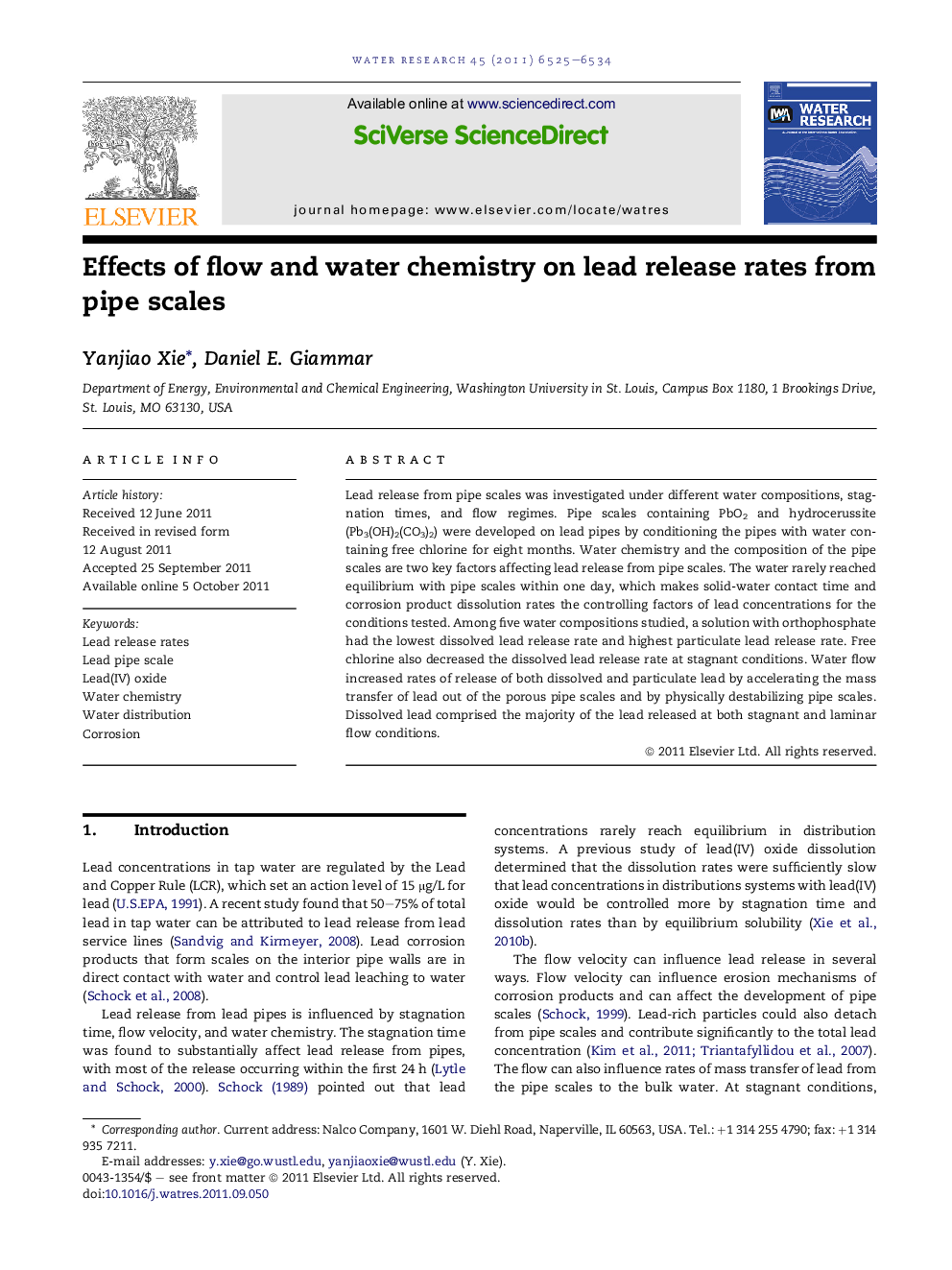| Article ID | Journal | Published Year | Pages | File Type |
|---|---|---|---|---|
| 4483942 | Water Research | 2011 | 10 Pages |
Lead release from pipe scales was investigated under different water compositions, stagnation times, and flow regimes. Pipe scales containing PbO2 and hydrocerussite (Pb3(OH)2(CO3)2) were developed on lead pipes by conditioning the pipes with water containing free chlorine for eight months. Water chemistry and the composition of the pipe scales are two key factors affecting lead release from pipe scales. The water rarely reached equilibrium with pipe scales within one day, which makes solid-water contact time and corrosion product dissolution rates the controlling factors of lead concentrations for the conditions tested. Among five water compositions studied, a solution with orthophosphate had the lowest dissolved lead release rate and highest particulate lead release rate. Free chlorine also decreased the dissolved lead release rate at stagnant conditions. Water flow increased rates of release of both dissolved and particulate lead by accelerating the mass transfer of lead out of the porous pipe scales and by physically destabilizing pipe scales. Dissolved lead comprised the majority of the lead released at both stagnant and laminar flow conditions.
Graphical abstractFigure optionsDownload full-size imageDownload high-quality image (156 K)Download as PowerPoint slideHighlights► Pipes with synthetic corrosion scales of PbO2 and hydrocerussite were studied. ► Flow enhanced dissolved lead release rates by accelerating the mass transfer. ► Flow increased particulate lead release rates by destabilizing pipe scales. ► Orthophosphate and free chlorine suppressed dissolved lead release rate. ► Dissolved lead comprised most of the lead at stagnant and laminar flow conditions.
